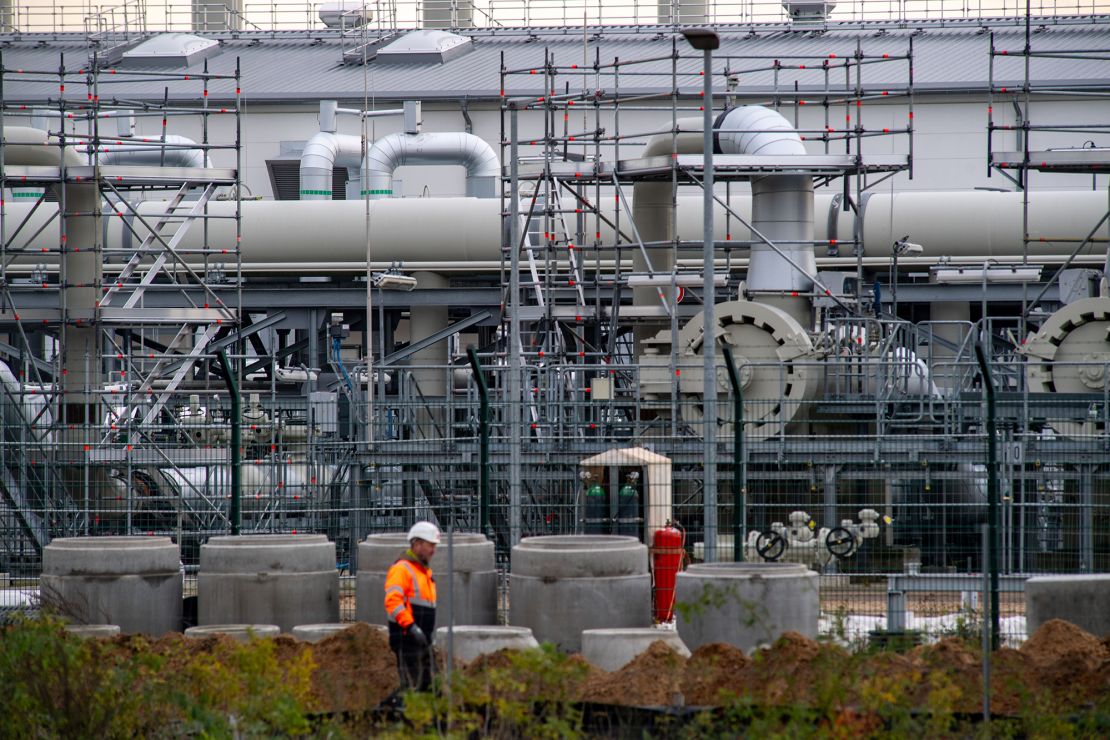
Not all pandemic recoveries are created equal.
The world’s richest economies have taken diverging paths in recuperating from the devastating effects of Covid-19.
At a time when multiple forces and crises — wars, geopolitical tensions, the pandemic’s lingering aftershocks, high inflation and steep borrowing costs — weigh on global growth, there have been few bright spots.
The US economy is one of them. Gross domestic product in the United States grew at a remarkable 5.2% in the third quarter, ahead of China, long the engine of global growth.
“The US has really outperformed relative to other countries for the past year,” Innes McFee, chief global economist for Oxford Economics, told CNN.
The United States has powered ahead of the European Union, the United Kingdom, Japan, Canada and other advanced economies this year.
Last month, the Paris-based Organisation for Economic Co-operation and Development became the latest intergovernmental body to upgrade its forecasts for US growth this year and next, while downgrading the outlook for the 20 countries that use the euro currency.
That followed similar moves by the Washington-based International Monetary Fund in October.
The IMF now expects US GDP to expand by 2.1% this year and 1.5% in 2024 — more than double the growth rates forecast for the UK economy and well ahead of the euro area, which is predicted to grow 0.7% this year and 1.2% next year.
The immediate explanations for the disparate fortunes of the world’s most advanced economies are differences in energy prices, pandemic-era stimulus and the pass-through of higher interest rates.
But there are also longer-term, structural factors playing into the divergence, which give the United States the upper hand. Even so, the US economy is widely expected to grow at a much slower rate in the final months of the year as pandemic savings dwindle and borrowing costs remain at a 22-year high.
Energy prices
The impact of last year’s spike in energy prices has been the main driver of the gap between the US and euro area economies, OECD chief economist Clare Lombardelli told reporters last week.
“Oil is a global commodity, but natural gas is regionally segmented,” said Preston Caldwell, chief US economist for Morningstar Research Services. “Even though natural gas prices did go up (in the US), they went up far higher in Europe, and they had engaged in all kinds of rationing. That had a major effect on output, and some of that lingers.”

Germany felt the full force of the energy shock because of its huge manufacturing sector and reliance on Russian gas at the time. Output in Europe’s biggest economy shrank slightly in the third quarter and a number of economists now expect a technical recession, defined as two consecutive quarters of declining output.
Fiscal and monetary policy
While officials on both sides of the Atlantic turned on the fiscal stimulus taps to cushion their economies from the impact of Covid-19, the United States did so on a much bigger scale.
That generous government support, including debt payment moratoriums, combined with shifting consumption patterns and a “refinancing boom” amid historically low interest rates to help stuff Americans’ coffers.
Savings accumulated during the pandemic allowed US consumers to keep spending despite rising prices, said Carsten Brzeski, global head of macroeconomic research at Dutch bank ING. That offset the negative impact of inflation on consumption, the primary driver of the US economy.
But there could be some downsides to all that splurging.
Americans have tapped their piggy banks excessively during the past couple of years, while savings accounts in other countries have been left relatively untouched. That could create patches of vulnerability for the United States moving forward, said McFee at Oxford Economics.
Additionally, the United States has not yet felt the full impact of higher interest rates. Mortgage holders and corporate borrowers typically have to refinance less frequently in the United States than in other countries, resulting in monetary policy taking longer to feed through to the economy, McFee added.
China’s slowdown
It’s rare for the US economy’s growth rate to rival that of China. The world’s second-largest economy had a solid start to the year after emerging from three years of Covid restrictions. But the recovery fizzled out in the April-to-June quarter amid weak consumer spending, a persistent slump in real estate and muted global demand for China’s manufactured goods.
The country’s economy looked like it could “stall altogether” over the summer, according to Julian Evans-Pritchard, chief China economist at Capital Economics.
It has regained some momentum in recent months, with households’ confidence improving and retail sales accelerating, he said Tuesday during an online briefing with journalists and investors.

An emerging acceleration in government spending to support the economy will also “offer some boost.” But a continued downturn in the country’s enormous property sector and a likely weakening in exports, which up until now have been “resilient,” will weigh on growth, Evans-Pritchard added.
“We think by the end of next year the economy will be slowing again.”
In another sign of the gloomy outlook for the world’s No. 2 economy, Moody’s put China on watch for a credit ratings downgrade Tuesday, lowering the outlook on its government debt to “negative” from “stable.”
The ratings agency expects China’s annual growth rate to slow to 4% in both 2024 and 2025, and average 3.8% a year from 2026 to 2030. By comparison, in the decade before the pandemic, the Chinese economy grew 7.7% a year on average, according to BlackRock.
India, on the other hand, is forecast to expand 6.3% this year and next, according to the IMF, which would make it the world’s fastest-growing major economy — and a rising challenger to its neighbor.
US growth to slow but AI boom looms
Although the US economy’s red-hot performance has defied expectations, economists think it’s unlikely to continue.
Instead, the economy is expected to undergo a modest slowdown this quarter and through next year. Morningstar’s Caldwell projects annualized growth rates, favored in the United States, under 1% during the second and third quarters.
“That’s getting into low territory, but not negative territory, not recessionary territory,” he said. “I would say recession is possible, but it’s not my base case.”
Several major bank CEOs, meanwhile, including Citigroup’s Jane Fraser and JPMorgan Chase CEO Jamie Dimon, have warned that the US economy could soon find itself on a less sure footing.
But longer-term, the picture looks brighter and could further cement America’s lead over Europe in the coming years.
President Joe Biden’s Inflation Reduction Act, which is set to channel $369 billion toward clean energy projects, could attract even more investment into the United States, already one of the best places to raise capital globally.
In artificial intelligence alone, cumulative venture capital investment in the United States reached nearly $450 billion over the past decade, according to OECD data. That’s more than double the AI investment in China and nearly 10 times that in either the European Union or the United Kingdom.
A concentration of innovative tech companies and a rapid uptake of new technologies have helped the United States notch strong productivity gains, especially as compared with Europe and the UK, said Andrew Kenningham, chief Europe economist at Capital Economics.
And with the United States poised, according to Kenningham, to make the most of developments in AI, that gap could widen.
Source: CNN








